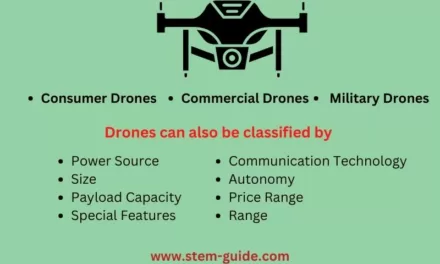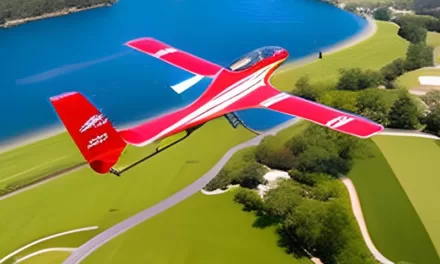Rise of the Drones
Drones are unmanned aerial vehicles (UAVs) that have been revolutionizing various industries over the past decade. From agriculture to entertainment, drones have proved to be an efficient and cost-effective alternative to traditional methods. This article aims to explore the various industries that drones are being utilized in and how they are changing the way things are done.
What are drones?
A drone is an unmanned aerial vehicle (UAV) that is remotely controlled or can fly autonomously. They are equipped with cameras, sensors, and other specialized technology that allows them to collect data, capture images, and perform a wide range of tasks.
Read more about the 5 Best Drones for Photography and Videography!
History of drones
Drones have been around for decades, but their use has significantly increased in recent years due to technological advancements. The first unmanned flight was recorded in 1849 when Austria launched unmanned balloons that were loaded with explosives. In the 1900s, drones were mainly used for military purposes. It wasn’t until the 21st century that drones began to be used in other industries.
Importance of drones in various industries
Drones are becoming increasingly important in various industries due to their cost-effectiveness, efficiency, and ability to collect data. They can perform tasks that were previously done by humans, saving time, resources, and even lives. With advancements in drone technology, industries are finding more applications for these devices, which are leading to increased productivity and improved operations.
This article aims to provide an in-depth analysis of the various industries that are currently utilizing drones, the types of drones being used, their applications, and the benefits they provide. It will also discuss the future of drones, advancements in technology, new applications, and potential challenges to the drone industry.
The Use of Drones in Agriculture
Overview of agricultural drones
Agricultural drones are UAVs specifically designed to collect data and monitor crops. They are equipped with sensors and cameras that can capture images and data, which can be used to monitor crop health, soil moisture, and nutrient levels.
Benefits of using drones in agriculture
Using drones in agriculture can significantly reduce the time and resources needed to monitor crops. They can also provide real-time data on crop health, allowing farmers to make informed decisions on when to plant, irrigate, or harvest. Additionally, drones can cover large areas quickly and easily, allowing farmers to assess the health of their crops more efficiently.
Types of drones used in agriculture
The most common types of drones used in agriculture are fixed-wing drones, multirotor drones, and hybrid drones. Fixed-wing drones are designed to cover large areas quickly and efficiently, while multirotor drones are more maneuverable and can hover in place for extended periods. Hybrid drones combine the advantages of both fixed-wing and multirotor drones.
Applications of drones in agriculture
Drones in agriculture are used for a wide range of applications, including crop monitoring, soil analysis, and irrigation management. They can also be used for planting and harvesting crops, spraying pesticides and fertilizers, and monitoring livestock.
Drones in Construction Industry
Introduction to Drones in Construction
Drones are becoming increasingly popular in the construction industry due to their ability to collect data and monitor job sites. They can be used to survey land, inspect structures, and monitor progress.
Advantages of using drones in construction
Using drones in construction can significantly reduce the time and resources needed to monitor job sites. They can provide real-time data on job progress, allowing project managers to make informed decisions and avoid delays. Additionally, drones can safely inspect structures and identify potential safety hazards.
Types of drones used in construction
The most common types of drones used in construction are fixed-wing drones, multirotor drones, and hybrid drones. Fixed-wing drones are used for land surveying and mapping, while multirotor drones are used for inspections and monitoring. Hybrid drones can perform a wide range of tasks, including monitoring, surveying, and inspections.
Applications of drones in construction
Drones in construction are used for a wide range of applications, including land surveying, mapping, progress monitoring, and safety inspections. They can also be used for stockpile measurements, 3D modeling, and thermal inspections.
Drones in Logistics and Delivery Industry
Overview of Logistics and Delivery Drones
Logistics and delivery drones are UAVs designed to transport goods and packages from one location to another. They are equipped with GPS and sensors that can navigate the drone to the delivery location.
Benefits of using Drones in Logistics and Delivery
Using drones in logistics and delivery can significantly reduce the time and cost of transportation. They can also reach areas that are difficult to access by traditional means, such as remote locations or areas with heavy traffic. Additionally, drones can deliver packages faster than traditional delivery methods.
Types of drones used in logistics and delivery
The most common types of drones used in logistics and delivery are fixed-wing drones and multirotor drones. Fixed-wing drones are designed for long-range flights and can carry heavier payloads, while multirotor drones are more maneuverable and can reach destinations faster.
Applications of Drones in Logistics and Delivery
Drones in logistics and delivery are used for a wide range of applications, including last-mile deliveries, emergency deliveries, and medical supply deliveries. They can also be used to deliver packages to areas affected by natural disasters or areas with poor infrastructure.
The Future of Drones
- Advancements in drone technology: Advancements in drone technology have led to increased efficiency, longer flight times, and improved safety features. New materials, such as carbon fiber, are being used to make drones lighter and more durable.
- New applications of drones: Drones are finding new applications in industries such as mining, oil and gas, and emergency response. They can be used for tasks such as inspecting pipelines, monitoring wildlife, and assessing damage after a natural disaster.
- Potential challenges for the drone industry: The drone industry faces challenges such as regulation, safety, and privacy concerns. Regulations regarding drone usage vary from country to country, and safety concerns arise due to the potential for drone collisions with other aircraft. Privacy concerns arise due to the potential for drones to capture images or data without consent.
Conclusion:
The rise of drones has revolutionized various industries, providing benefits such as increased efficiency, improved safety, and reduced costs. With advancements in technology, drones will continue to find new applications and provide even greater benefits in the future. However, addressing the challenges facing the drone industry will be crucial to ensuring the safe and responsible use of these devices.
Read more about Drones VS Privacy: What you need to Know?


